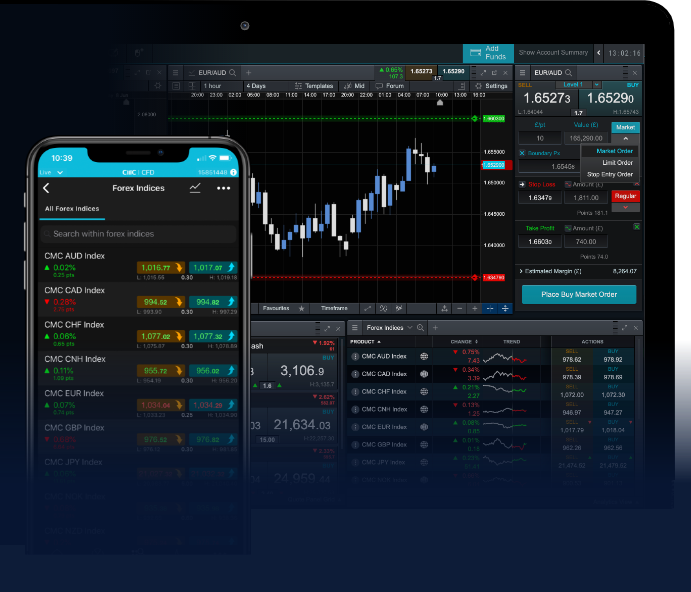
If you are looking to venture into the exciting world of forex trading, understanding various forex trading strategies is vital. Whether you’re a beginner or an experienced trader, the right strategy can make a significant difference to your success in the forex market. For a detailed overview of different strategies and insights, visit forex trading strategies https://ex-zar.com/.
Understanding Forex Trading
The foreign exchange (forex) market is the largest financial market in the world, with a daily trading volume exceeding $6 trillion. It operates through a network of banks, financial institutions, corporations, and individual traders, allowing for currency trading 24 hours a day, five days a week. Given its vastness and complexity, having a solid trading strategy is essential for success.
Types of Forex Trading Strategies
There are several types of forex trading strategies, each designed to cater to different trading styles and preferences. Here are some of the most popular strategies:
1. Scalping
Scalping is a short-term trading strategy where traders aim to capitalize on small price movements, usually making dozens or hundreds of trades in a single day. The key to successful scalping is speed and precision. Traders often use technical indicators to identify entry and exit points quickly.
2. Day Trading
Day trading involves opening and closing trades within the same trading day. Day traders seek to profit from intraday price movements without holding overnight positions. This strategy requires a good understanding of market dynamics and the implementation of effective risk management techniques.
3. Swing Trading
Swing trading is a medium-term strategy where traders hold positions for several days to take advantage of expected price movements. Swing traders typically use a combination of technical and fundamental analysis to identify potential price swings and optimize entry and exit points.
4. Position Trading

Position trading is a long-term strategy suited for traders who prefer to minimize their market exposure. Position traders hold long-term positions based on fundamental analysis, market trends, and broader economic indicators. This strategy requires patience and the ability to withstand market fluctuations.
5. Trend Following
Trend following is a strategy where traders analyze price trends and aim to profit by buying in an uptrend or selling in a downtrend. Trend-following traders often use moving averages and other technical indicators to confirm trends and make informed trading decisions.
Developing Your Trading Strategy
Creating a successful trading strategy requires thorough research and understanding of market dynamics. Here are steps to develop your trading strategy:
1. Define Your Trading Goals
Establishing clear trading goals is crucial. Consider your risk tolerance, preferred trading style, and the time you can dedicate to trading. This foundation will guide your strategy development and help you stay focused.
2. Choose Your Trading Style
Decide which trading style aligns with your goals and personality. Whether it’s scalping, day trading, swing trading, or position trading, each style has unique characteristics that demand specific skills and tools.
3. Analyze the Market
Conduct a thorough analysis of the forex market, including currency pairs, economic indicators, and market trends. Knowledge of macroeconomic factors affecting currencies is critical for making informed trading decisions.
4. Create a Trading Plan
A solid trading plan outlines your strategy, including entry and exit points, risk management rules, and trading frequency. Stick to your plan to avoid emotional trading, which can lead to losses.

5. Practice with a Demo Account
Before committing real money, practice your strategy using a demo account. This will allow you to refine your strategy and gain experience without financial risk. Most reputable brokers offer demo accounts for prospective traders.
Risk Management in Forex Trading
Effective risk management is crucial in forex trading to minimize potential losses and maximize profits. Implementing sound risk management strategies can help you survive the market’s volatility. Here are key aspects of risk management:
1. Set a Stop-Loss Order
A stop-loss order is an essential tool that automatically closes your trade when the price reaches a predetermined level. This minimizes losses and protects your trading capital.
2. Position Sizing
Determine the size of your trading positions based on your account size and risk tolerance. Never risk more than a small percentage of your total account balance on a single trade; many traders use 1-2% as a rule of thumb.
3. Diversification
Don’t put all your eggs in one basket. Diversifying your trades across different currency pairs can help spread risk and mitigate losses from poor-performing trades.
4. Regularly Review Your Strategy
Continuously evaluate your trading strategy and performance. Analyze your trades, identify mistakes, and learn from them. Regular reviews can help refine your approach and improve your overall trading skills.
Conclusion
Forex trading can be a rewarding experience when approached with the right strategies and mindset. Understanding various forex trading strategies, developing a solid trading plan, and implementing effective risk management techniques are crucial for long-term success. By continually educating yourself and adapting to market conditions, you can enhance your trading skills and achieve your financial goals in the dynamic world of forex trading.